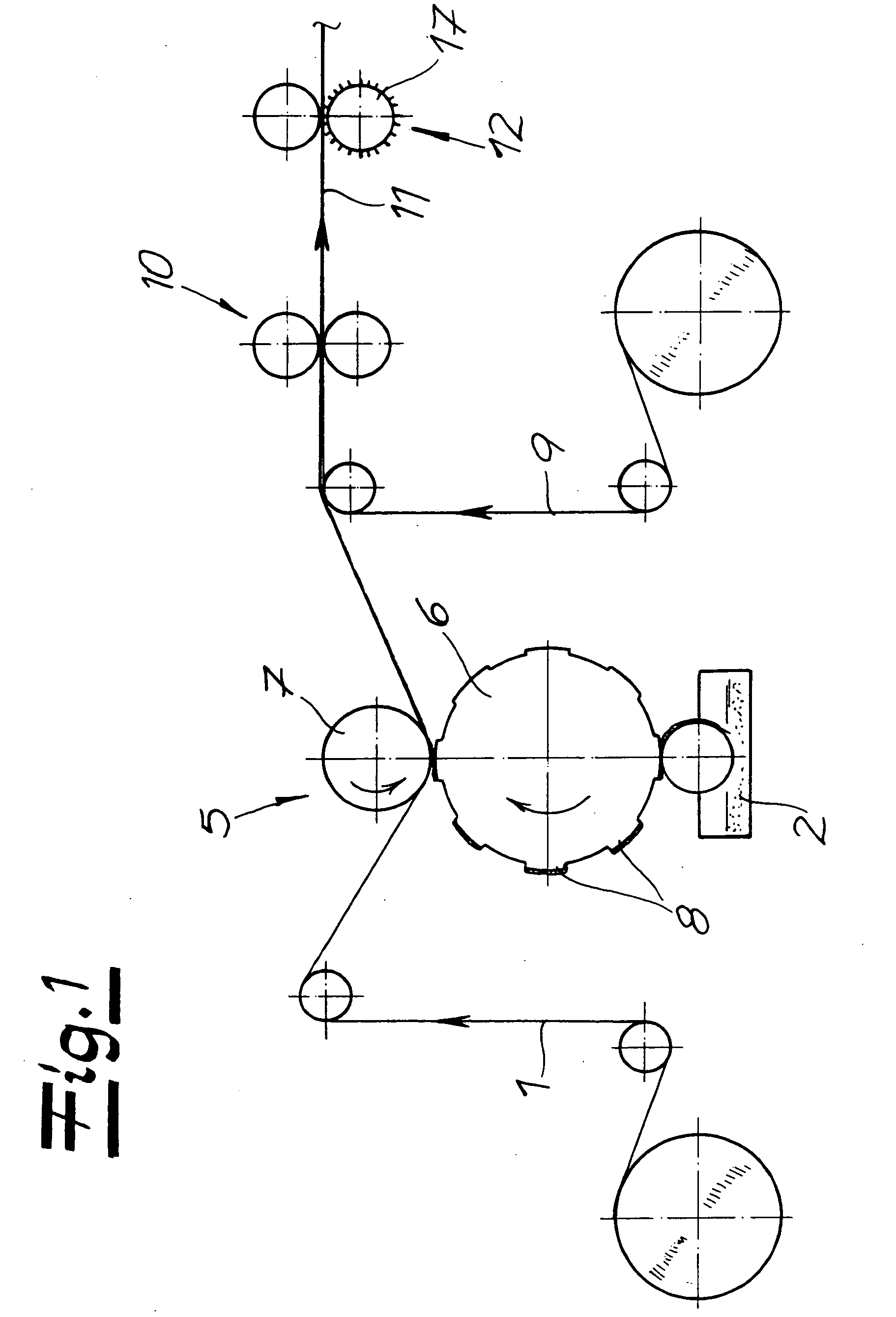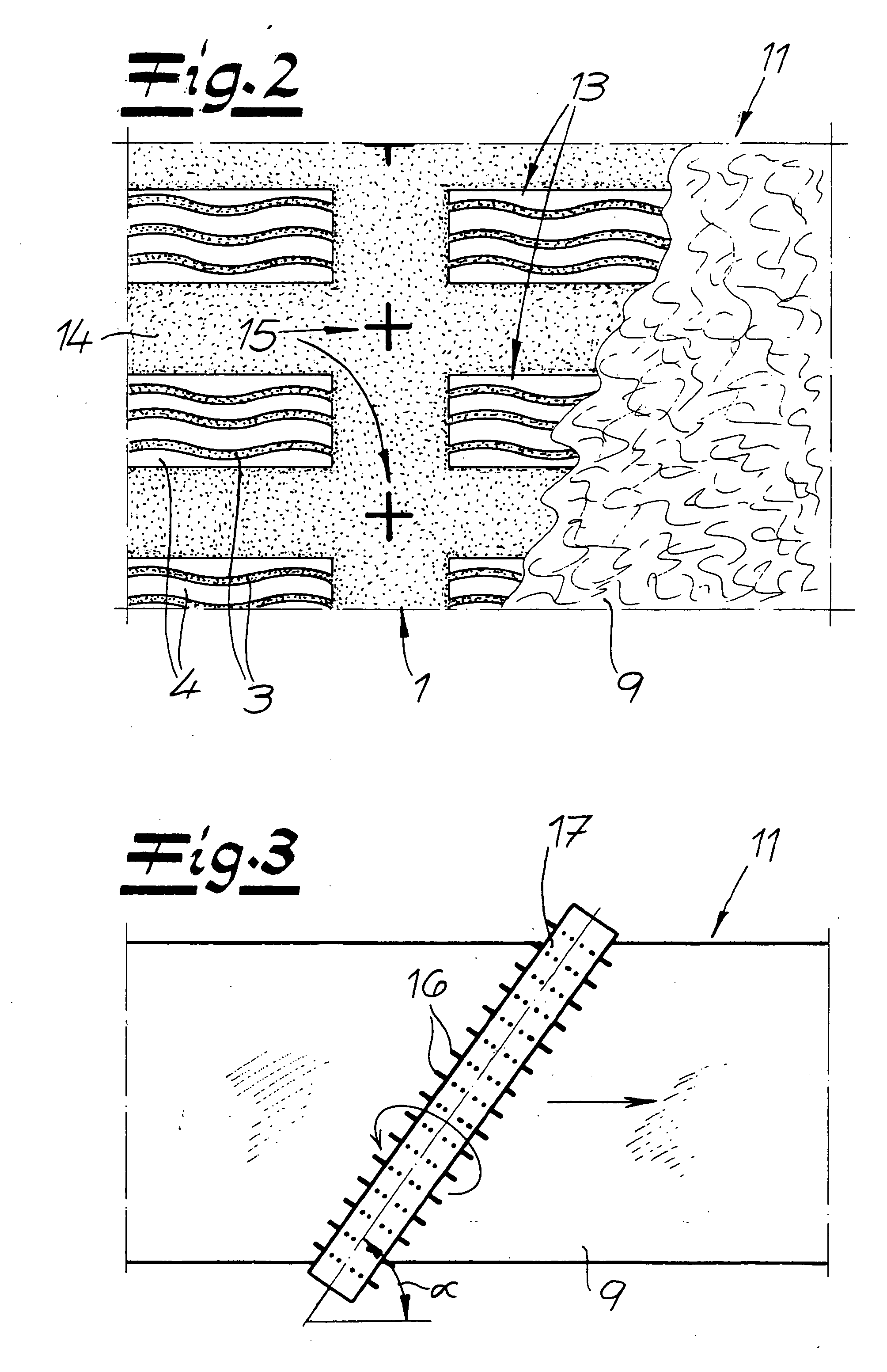Method for the production of a laminate material for hook and loop closures
a technology of laminate material and hook and loop closure, which is applied in the directions of cloth making applications, weaving, transportation and packaging, etc., can solve the problems of deterioration of the reduction of the number of effective fibers, etc., and achieve the effect of improving the hook and loop properties of the laminate material and high laminate strength of the laminate material
- Summary
- Abstract
- Description
- Claims
- Application Information
AI Technical Summary
Benefits of technology
Problems solved by technology
Method used
Image
Examples
Embodiment Construction
[0023] The method for the production of the laminate material is schematically shown in FIG. 1. Adhesive 2 is applied to a carrier film 1 in a pattern consisting of adhesive areas 3 and regions 4 that are free of adhesive. The adhesive is applied to carrier film 1 according to a rotary printing method, for example. In this connection, carrier film 1 passes through an arrangement of printing rollers 5, consisting of an engraved cylinder 6 and a counter-cylinder 7 that presses carrier film 1 against the engraved cylinder. The surface of engraved cylinder 6 is provided with an engraving 8 that forms the adhesive pattern. In the embodiment of the method as shown, an amount of adhesive that can be determined in a variable manner is applied to the surface of engraved cylinder 6, and transferred to carrier film 1 at the elevated surfaces of engraving 8. A material web of a textile material 9, which is suitable for forming a connection with hook and loop hooks, is applied to the side of car...
PUM
| Property | Measurement | Unit |
|---|---|---|
| surface structure | aaaaa | aaaaa |
| adhesive | aaaaa | aaaaa |
| areas | aaaaa | aaaaa |
Abstract
Description
Claims
Application Information
 Login to View More
Login to View More - R&D
- Intellectual Property
- Life Sciences
- Materials
- Tech Scout
- Unparalleled Data Quality
- Higher Quality Content
- 60% Fewer Hallucinations
Browse by: Latest US Patents, China's latest patents, Technical Efficacy Thesaurus, Application Domain, Technology Topic, Popular Technical Reports.
© 2025 PatSnap. All rights reserved.Legal|Privacy policy|Modern Slavery Act Transparency Statement|Sitemap|About US| Contact US: help@patsnap.com



